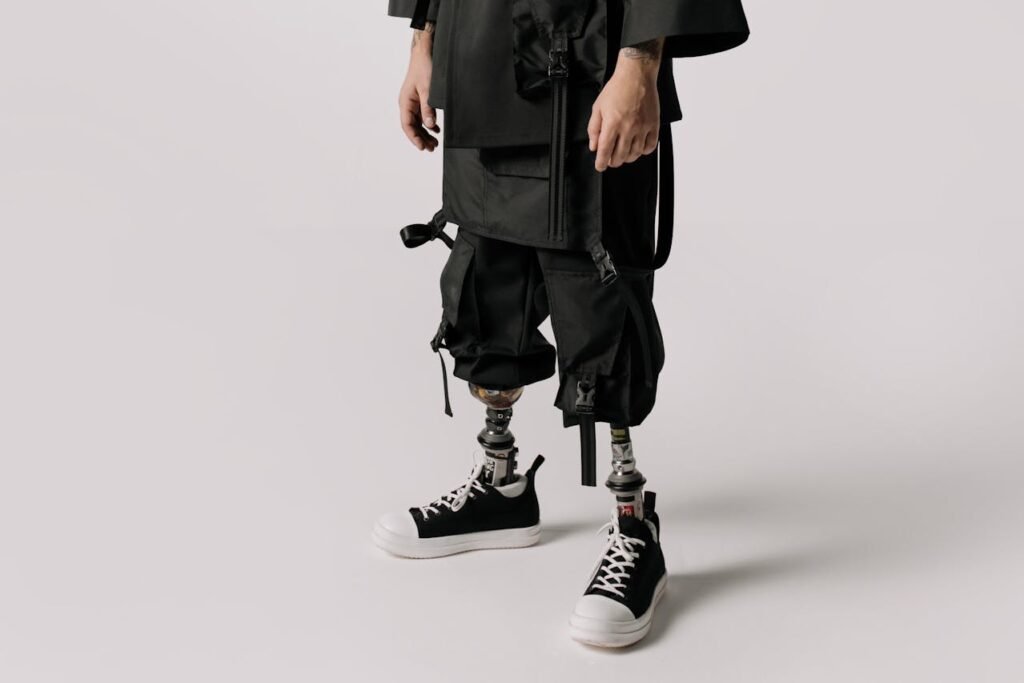For outdoor enthusiasts, freedom and mobility are essential to embracing the adventures they love. Whether hiking through rugged terrains, cycling across scenic trails, or simply enjoying nature walks, the right prosthetic limb can make all the difference. Selecting a prosthetic for outdoor activities is not just about functionality—it’s about ensuring durability, adaptability, and comfort for the challenges of the great outdoors.
In this guide, we’ll explore everything you need to consider when choosing a prosthetic limb tailored for outdoor enthusiasts. From understanding activity-specific demands to incorporating advanced features, we aim to provide actionable insights that empower users to maximize their mobility and experiences.
Understanding the Unique Needs of Outdoor Activities
Outdoor activities bring a distinct set of challenges, from unpredictable weather conditions to uneven terrains. A prosthetic limb for outdoor enthusiasts must be designed to handle these factors while enhancing the user’s comfort and confidence.
Adapting to Different Terrains
One of the most critical aspects of outdoor prosthetics is their ability to adapt to varying terrains. Hiking, for example, requires a prosthetic that can navigate steep inclines, rocky paths, and sudden changes in ground stability. Cycling, on the other hand, prioritizes smooth power transfer and the ability to maintain balance.
Prosthetics with multi-axial ankles are particularly beneficial for outdoor users as they allow for greater flexibility and adjustment on uneven surfaces. Similarly, energy-return feet help users conserve energy during extended activities like hiking or running.
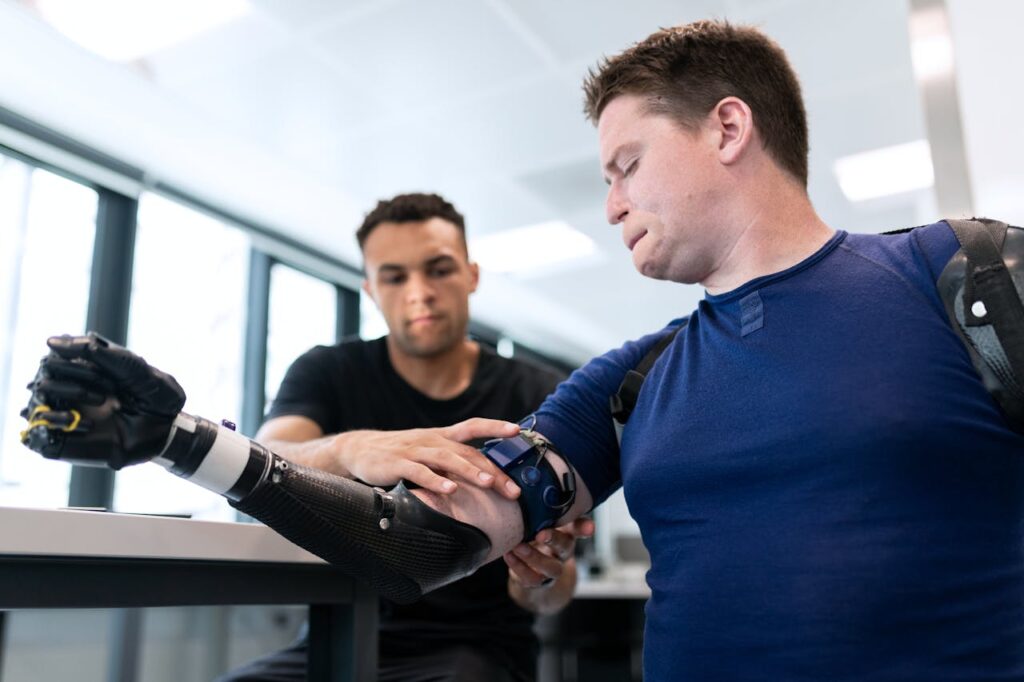
For lower-limb users, ensuring the prosthetic includes shock-absorbing components can significantly reduce the impact on residual limbs, preventing discomfort or injuries during prolonged use.
For businesses, offering customized solutions based on specific outdoor activities creates a tailored experience for users. Detailed consultations that explore the user’s preferred activities, terrain types, and frequency of use help match them with the most suitable features and designs.
Managing Weather Resistance
Outdoor environments expose prosthetics to weather elements like rain, humidity, heat, and cold. A well-suited prosthetic must include features that protect against these factors to ensure durability and performance.
Water-resistant or waterproof materials are essential for activities involving water exposure, such as kayaking or fishing. For users who frequently hike in humid or rainy conditions, corrosion-resistant components and sealed joints prevent damage over time. Similarly, UV-resistant finishes protect prosthetics from prolonged sun exposure, ensuring they maintain their strength and appearance.
Businesses can emphasize the importance of weather resistance by highlighting the rigorous testing their products undergo. Demonstrating how the prosthetic performs under extreme conditions reassures users that it can withstand their outdoor adventures.
Navigating Varied Terrains with Precision
Outdoor activities expose users to terrains that are often unpredictable and require precise adjustments from their prosthetic limb. The surface can shift from soft sand to rocky paths within moments, or change from dry ground to slippery, rain-soaked trails. A prosthetic limb must accommodate these variations without compromising balance or comfort.
Prosthetics with multi-axial ankles and adaptive footplates are particularly effective for outdoor enthusiasts. These features mimic the natural movement of the human ankle, allowing users to adjust to uneven surfaces seamlessly.
For businesses, focusing on such adaptive designs not only enhances usability but also reduces the likelihood of user fatigue or injury during extended activity.
Endurance for Extended Adventures
Outdoor enthusiasts often engage in activities that require sustained effort over long periods, such as multi-day hikes or cycling tours. In these scenarios, the prosthetic limb must support endurance by minimizing physical strain and enhancing energy efficiency.
For example, energy-return feet are critical for hiking and running, as they store energy during the step and release it to propel the user forward. This technology reduces the effort required for movement, allowing users to conserve energy over long distances.
Businesses can explain the long-term benefits of such features, emphasizing their role in enabling extended adventures. Offering side-by-side comparisons with standard prosthetics during consultations can also help users appreciate the value of these enhancements.
Weatherproofing for All-Season Use
Outdoor enthusiasts rarely limit their activities to ideal weather conditions. They venture into the outdoors during rainy seasons, in extreme heat, and even in icy environments. Prosthetics must be able to withstand these environmental challenges while maintaining performance.
Weather-resistant materials like titanium and high-strength polymers provide durability against corrosion and wear. For users exposed to water, whether through rain or aquatic activities, waterproofing ensures the prosthetic remains functional without damage.
Businesses that integrate such materials into their designs should highlight these advantages, positioning their products as reliable companions for any adventure. Additionally, offering care guides tailored to specific environments—such as protecting against saltwater exposure—further equips users for success.
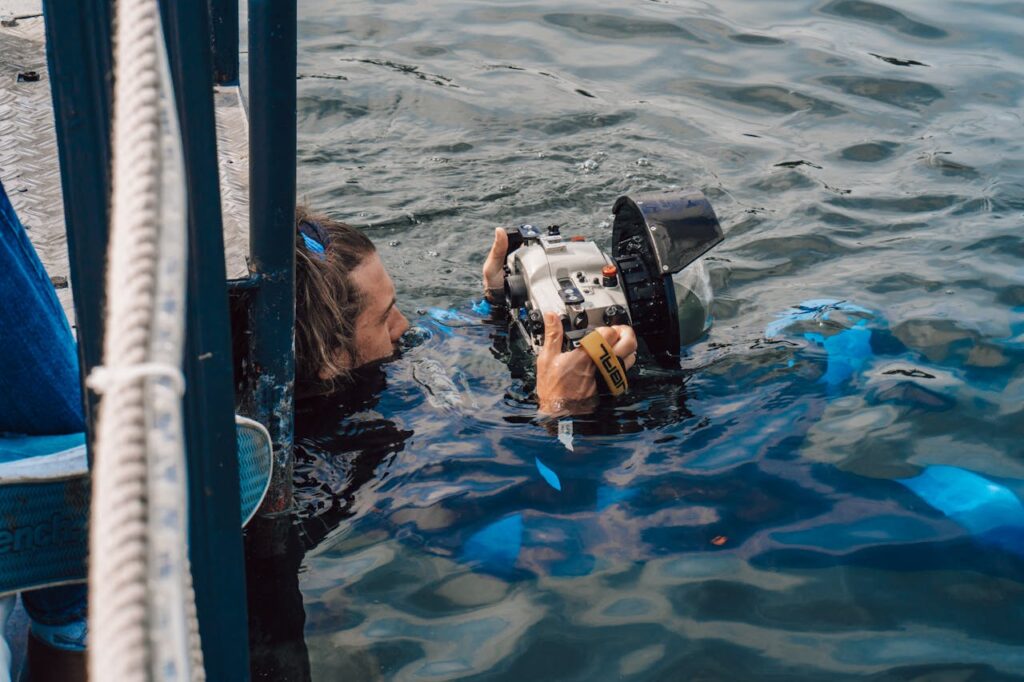
Designing for Comfort During Extended Outdoor Use
Outdoor enthusiasts often spend long hours engaging in their activities, whether it’s hiking through the mountains, cycling across trails, or camping under the stars. Comfort becomes a critical factor when selecting a prosthetic limb that can support extended use without causing irritation or fatigue.
Custom Fit for Optimal Comfort
A well-fitted prosthetic ensures even weight distribution and minimizes pressure points, making it easier to stay active for longer periods. For outdoor users, the socket—where the prosthetic connects to the residual limb—must provide a snug yet comfortable fit to prevent chafing, blisters, or discomfort during vigorous movement.
Advanced fitting technologies, such as 3D scanning, allow for precise customization of the socket, taking into account the unique anatomy of the user’s residual limb.
For businesses, incorporating these technologies into the fitting process ensures users experience maximum comfort, even during physically demanding activities.
Providing options for adjustable sockets that accommodate changes in limb volume, particularly due to temperature fluctuations, further enhances usability in outdoor environments.
Breathable and Lightweight Materials
The materials used in outdoor prosthetics play a significant role in determining comfort. Lightweight materials like carbon fiber or titanium reduce the overall weight of the prosthetic, minimizing user fatigue during extended activity.
Additionally, breathable liners made from advanced materials wick away moisture, keeping the residual limb dry and comfortable in humid or hot conditions.
For businesses, emphasizing these material benefits during consultations and marketing materials helps users understand the value of investing in a high-quality prosthetic.
Demonstrating how these materials improve performance in real-world scenarios, such as a long hike or a full day of cycling, makes the benefits tangible and relatable.
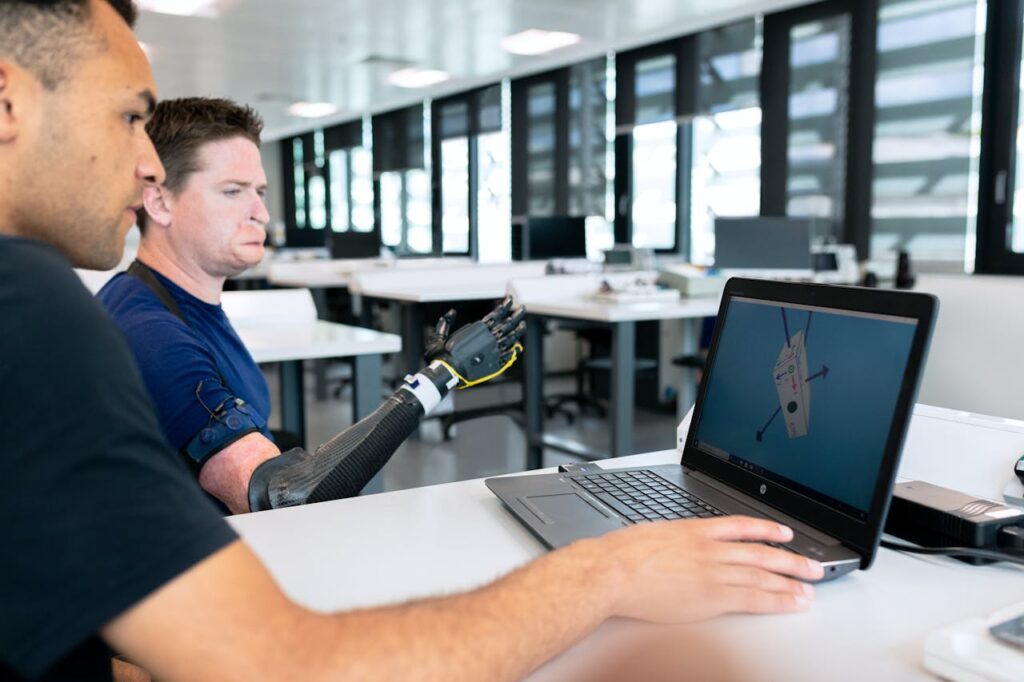
Shock Absorption for Joint Protection
Outdoor activities often involve repetitive impacts, such as walking on uneven terrain or running on trails. Over time, these impacts can strain joints and muscles, especially for users who rely on a prosthetic limb.
Shock-absorbing technology in prosthetics, such as dynamic footplates or spring-loaded mechanisms, helps reduce the stress on residual limbs and improves overall comfort.
For businesses, offering a variety of shock-absorbing features tailored to different activities enhances user satisfaction. Educating users on how these technologies protect their joints and contribute to long-term health ensures they make informed decisions.
Enhancing Safety for Outdoor Enthusiasts
Safety is a top priority for prosthetic users engaging in outdoor activities. The right prosthetic should instill confidence in the user by providing stability, balance, and reliability across various conditions.
Stability and Balance on Uneven Surfaces
Navigating uneven terrains, such as rocky paths, steep hills, or forest trails, requires prosthetics with superior stability and balance features. For lower-limb prosthetics, multi-axial ankles allow for better adaptation to uneven surfaces, reducing the risk of falls. Treaded or slip-resistant footplates provide additional traction, especially in wet or loose soil.
Upper-limb users involved in activities like rock climbing or fishing may benefit from prosthetics with secure grip mechanisms and enhanced wrist flexibility. These features ensure users can handle equipment or maintain balance effectively, even in challenging conditions.
For businesses, highlighting the safety benefits of these features through demonstrations or user testimonials builds trust in the product. Offering hands-on trials in controlled outdoor environments helps users feel confident in their ability to navigate real-world challenges.
Resilience Against Wear and Tear
Outdoor environments can be tough on prosthetics, with exposure to dirt, moisture, and rough surfaces leading to wear and tear over time. Ensuring the prosthetic is built with durability in mind protects the user from unexpected failures during activities.
Prosthetics designed for outdoor enthusiasts should feature corrosion-resistant materials, reinforced joints, and robust construction that withstands impacts.
For businesses, offering maintenance services or repair kits tailored to outdoor prosthetics ensures users can quickly address minor issues and continue their adventures without interruption.
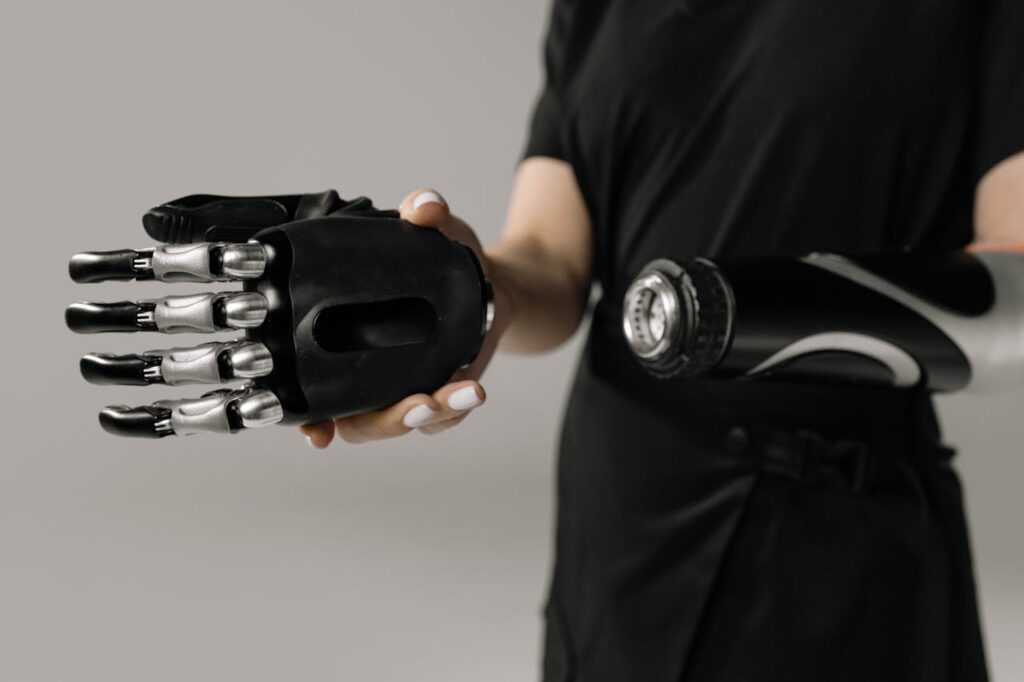
Embracing Versatility for Multi-Activity Enthusiasts
Many outdoor enthusiasts enjoy a variety of activities, from hiking and camping to cycling, kayaking, and even climbing. Choosing a prosthetic that adapts seamlessly across multiple activities ensures users don’t have to compromise on performance or convenience.
Modular Designs for Customization
One of the most effective ways to provide versatility is through modular prosthetic designs. These allow users to switch out components, such as feet, grips, or attachments, depending on the activity. For example, a user might attach a high-traction foot for hiking but switch to a streamlined blade for cycling.
For businesses, showcasing the ease and practicality of modular systems is essential. Offering a base prosthetic with optional add-ons tailored to specific outdoor activities ensures users can build a solution that fits their lifestyle.
Demonstrations during consultations or marketing videos highlighting real-world use cases can illustrate how these systems enhance versatility.
Ensuring Smooth Transitions Between Activities
For outdoor enthusiasts who transition between activities frequently, prosthetics must be designed to facilitate quick and hassle-free adjustments.
Features like quick-release mechanisms, adjustable joints, or universal adapters streamline the process, allowing users to switch from one setup to another without needing tools or professional assistance.
Businesses that provide educational resources, such as how-to guides or training sessions, empower users to make these adjustments confidently. Offering a “starter kit” of essential attachments for common outdoor activities further simplifies the process and enhances user satisfaction.
Supporting Long-Term Use and Maintenance
Outdoor prosthetics are often exposed to challenging environments, and ensuring their longevity requires regular maintenance and proactive care. For users, understanding how to maintain their prosthetic is key to preserving performance and preventing unexpected issues.
Designing for Ease of Maintenance
Outdoor prosthetics should be easy to clean and maintain, even after exposure to mud, water, or debris. Non-porous materials and sealed components help prevent the accumulation of dirt, while corrosion-resistant finishes protect against moisture.
For businesses, emphasizing these features during the purchasing process reassures users about the durability and reliability of the product. Providing cleaning kits or instructions tailored to outdoor use ensures users can care for their prosthetics effectively.

Offering Accessible Repair Services
Despite the best precautions, wear and tear are inevitable for outdoor prosthetics. Quick access to repair services or replacement parts ensures users can address issues promptly and get back to their activities without significant downtime.
Businesses can differentiate themselves by offering responsive customer support, repair warranties, or on-the-go repair kits. For instance, a portable repair kit with essential tools and spare parts allows users to fix minor issues during a hike or camping trip, enhancing both convenience and confidence.
Encouraging Confidence Through Community and Training
Adapting to a prosthetic limb for outdoor use can be daunting, particularly for those exploring challenging activities. Providing opportunities for users to connect with a community of like-minded individuals and access specialized training fosters confidence and motivation.
Building a Community of Outdoor Enthusiasts
Connecting users with others who share their passion for outdoor activities creates a sense of camaraderie and support. Businesses can facilitate this by hosting events, such as guided hikes or workshops, where users can share tips, showcase their experiences, and learn from one another.
Online platforms, such as forums or social media groups, can also serve as valuable spaces for users to exchange advice and celebrate their achievements. Highlighting these communities in your marketing materials demonstrates your commitment to supporting users beyond the sale.
Providing Skill-Building Opportunities
Skill-building is essential for users to fully embrace the potential of their prosthetic in outdoor settings. Training programs tailored to specific activities—such as navigating steep trails, cycling efficiently, or handling fishing gear—help users build competence and confidence.
Businesses that partner with rehabilitation centers, outdoor organizations, or adaptive sports programs to offer these training opportunities create additional value for users.
Encouraging participation in adaptive sports events or outdoor challenges further inspires users to explore their limits and achieve their goals.
Integrating Technology for Enhanced Outdoor Experiences
Technology is revolutionizing the design and functionality of prosthetic limbs, especially for outdoor enthusiasts. Advanced features not only improve mobility and performance but also provide greater control and adaptability in dynamic environments.
Smart Prosthetics for Outdoor Adaptation
Smart prosthetics equipped with sensors, microprocessors, and adaptive controls have transformed the way users navigate outdoor activities. For instance, a lower-limb prosthetic with a microprocessor knee can detect changes in terrain and adjust resistance automatically, providing stability on uneven surfaces like rocky trails or slopes.
Upper-limb prosthetics integrated with myoelectric sensors allow for more precise control, enabling users to manipulate objects such as climbing ropes, fishing rods, or camping tools effortlessly.
For businesses, emphasizing these technological advantages during consultations and providing real-world demonstrations helps users understand how smart prosthetics enhance their outdoor experiences.

Connectivity for Real-Time Adjustments
The integration of Bluetooth or app-based controls into prosthetics allows users to make real-time adjustments to their device’s settings. This feature is particularly beneficial for outdoor activities where conditions can change rapidly.
For example, a user hiking on flat terrain may switch to a higher resistance setting for an uphill climb via their smartphone app.
For businesses, highlighting the practicality of these features ensures users appreciate the convenience and adaptability that technology brings. Providing user-friendly apps with tutorials or guides simplifies the learning curve, ensuring users can fully leverage these capabilities.
Aesthetic and Functional Personalization
Prosthetic limbs for outdoor enthusiasts don’t just need to perform well—they should also reflect the user’s personality and lifestyle. Personalization, both aesthetic and functional, can elevate the user’s connection with their prosthetic and enhance their confidence during outdoor activities.
Tailoring Aesthetics for Self-Expression
For many outdoor enthusiasts, their prosthetic limb is an extension of their identity. Offering customizable designs, colors, and finishes allows users to align their prosthetic with their style and preferences. For instance, a user might choose a sleek, modern look for cycling or a rugged, nature-inspired design for hiking.
Businesses can provide customization options during the ordering process, collaborating with users to create a prosthetic that feels uniquely theirs.
Showcasing examples of personalized designs in marketing materials inspires creativity and reinforces the idea that prosthetics can be both functional and expressive.
Functional Enhancements for Specialized Needs
Outdoor activities often require unique features or attachments to meet specific challenges. Providing prosthetics with optional enhancements—such as specialized grips for rock climbing, detachable fins for swimming, or extended bases for snow trekking—ensures users have the right tools for their adventures.
For businesses, offering modular systems with a range of compatible add-ons creates flexibility for users who engage in multiple activities. Demonstrating how these functional enhancements work in real outdoor scenarios helps users visualize the benefits and feel confident in their choice.
The Role of Businesses in Supporting Outdoor Enthusiasts
Choosing the right prosthetic limb for outdoor activities is a journey that requires guidance, expertise, and ongoing support. Businesses that position themselves as partners in this journey can build trust and loyalty while empowering users to achieve their goals.
Delivering Exceptional Customer Service
From the initial consultation to post-purchase care, businesses must prioritize user satisfaction. This includes providing clear information about product features, answering questions with empathy and expertise, and ensuring users feel supported at every stage of the process.
Follow-up services, such as regular check-ins, adjustments, or maintenance, demonstrate a commitment to the user’s long-term success. Offering a direct line of communication—whether through phone support, email, or a dedicated app—ensures users can quickly access help when needed.

Advocating for Inclusivity in Outdoor Spaces
Businesses have a unique opportunity to promote inclusivity by partnering with outdoor organizations, adaptive sports programs, and community initiatives.
Supporting events that encourage participation by individuals with prosthetics fosters a culture of inclusion and accessibility in outdoor spaces.
For example, sponsoring adaptive hiking challenges or collaborating with national parks to create prosthetic-friendly trails can inspire more users to embrace outdoor activities.
Highlighting these efforts in marketing campaigns showcases the company’s dedication to empowering outdoor enthusiasts with prosthetics.
Conclusion
For outdoor enthusiasts, a prosthetic limb is more than a device—it’s a key to unlocking adventures and exploring the world with confidence and freedom. The journey to selecting the perfect prosthetic involves balancing functionality, durability, comfort, and personalization to match the unique demands of outdoor activities.
For businesses, this journey is an opportunity to create meaningful connections with users by providing innovative products, exceptional service, and a deep understanding of their needs.
By staying at the forefront of technology, offering tailored solutions, and fostering a supportive community, businesses can empower outdoor enthusiasts to embrace their passions and achieve their goals.
Ultimately, the right prosthetic limb transforms not just the way users move, but the way they live—allowing them to conquer trails, climb mountains, and navigate the great outdoors with confidence and joy.



